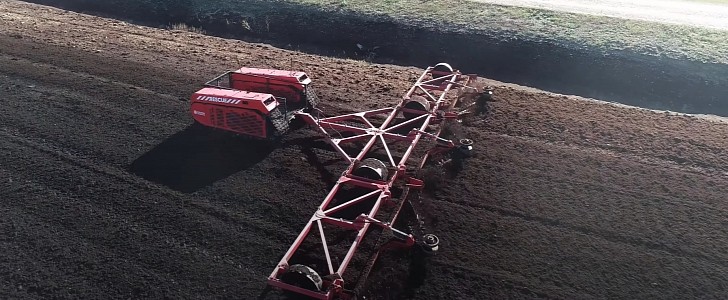A researcher at Milrem Robotics, an Estonian robotic vehicle manufacturer, comes to tell us something we already suspected. Turns out that using robots for farming purposes is better than using actual humans.
Milrem Robotics performed several experiments in the fields, using their Multiscope UGV (unmanned ground vehicle). They proved that by using the machines for peat harvesting, we can drastically decrease labor and fuel costs.
Tests concluded that depending on the harvesting method and number of machines used, farmers can reduce labor requirements by 34 to 43 percent and fuel consumption by 21 to 26 percent, according to the article published by researcher Riho Kägo. Moreover, by switching to robotic systems for peat harvesting and other industry-related activities, we can also significantly reduce CO2 emissions by up to 48 percent.
As its name suggests, Milrem Robotics’s Multiscope is a highly versatile unmanned vehicle suitable for military purposes as well as rescue missions, and the commercial sector.
The Multiscope is completely automated and comes in several available versions, depending on the tasks it can perform. In the study conducted by Milrem Robotics, in cooperation with scientists from the University of Tartu and the Estonian University of Life Sciences, researchers used a Multiscope UGV that can turn on the spot (it has a turn radius of 0 meters/feet), has a net weight of 1,630 kg (3,593 pounds) and a 1,200 kg (2,645 pounds) payload capacity. The Multiscope UGV is powered by two 19kW electric motors and has a low noise signature.
This is not the first time we’re hearing about robots trying to take over the agriculture sector. The Autonomous Weeder from Carbon Robotics is another great example of high-efficiency bots, as it can destroy over 100,000 undesirable weeds per hour. And then there’s also the apple-picking robot developed by some Australian researchers. The apple harvesting machine can pluck apples at a speed of only 7 seconds per piece of fruit.
Tests concluded that depending on the harvesting method and number of machines used, farmers can reduce labor requirements by 34 to 43 percent and fuel consumption by 21 to 26 percent, according to the article published by researcher Riho Kägo. Moreover, by switching to robotic systems for peat harvesting and other industry-related activities, we can also significantly reduce CO2 emissions by up to 48 percent.
As its name suggests, Milrem Robotics’s Multiscope is a highly versatile unmanned vehicle suitable for military purposes as well as rescue missions, and the commercial sector.
The Multiscope is completely automated and comes in several available versions, depending on the tasks it can perform. In the study conducted by Milrem Robotics, in cooperation with scientists from the University of Tartu and the Estonian University of Life Sciences, researchers used a Multiscope UGV that can turn on the spot (it has a turn radius of 0 meters/feet), has a net weight of 1,630 kg (3,593 pounds) and a 1,200 kg (2,645 pounds) payload capacity. The Multiscope UGV is powered by two 19kW electric motors and has a low noise signature.
This is not the first time we’re hearing about robots trying to take over the agriculture sector. The Autonomous Weeder from Carbon Robotics is another great example of high-efficiency bots, as it can destroy over 100,000 undesirable weeds per hour. And then there’s also the apple-picking robot developed by some Australian researchers. The apple harvesting machine can pluck apples at a speed of only 7 seconds per piece of fruit.


